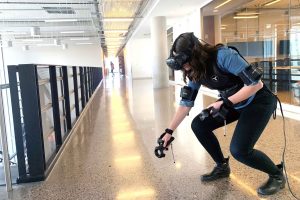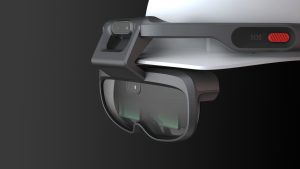The Price of Drugs: Exploring New Realities in Pharma

In response, large, mainline biotech firms like Pfizer and Novartis, smaller CMOs (contract manufacturing organizations), equipment manufacturers and others involved in the highly fragmented pharmaceutical sector are looking to emerging technologies to improve efficiency, speed up research and production, widen margins, and guarantee quality and safety.
The author describes what it takes to develop a drug and changes in Pharma, then goes on to discuss immersive wearable tech in pharma:
If you can’t raise prices, then you need to cut costs elsewhere. For pharma companies, this means spending less time and money on R&D and going to market faster. As the drug pipeline shifts to meet demand for personalized medicine (targeted biologics), pharma companies are feeling the pressure to revamp their product lines, factories, and processes to become more streamlined and cost-efficient.
AR/VR for drug discovery
R&D spending in pharma has been rising parallel to the growing complexity of drug development, leading forward-thinking companies to explore AR/VR as a tool for discovering new drugs faster (and therefore cheaper). If VR-trained surgeons are able to complete procedures faster than non-VR trained surgeons, it follows that pharma researchers would innovate faster with VR than they currently can using computer graphics (CAD) and static models of molecules made of wooden balls and wires. Indeed, whether in the classroom or the lab, virtual reality is proving effective for visualizing and conveying difficult concepts while augmented reality can put interactive complex molecules into the scientist’s real-world environment.
Wearing a VR headset, drug developers can step inside a molecule or compound to see how it responds to different stimuli and quickly simulate complex drug interactions. Wearing AR smart glasses or a mixed reality headset, researchers can manipulate molecules and chemical structures in space – folding, knotting, and changing the shape of the molecules right before their eyes – and tweak a drug’s chemical makeup so it bonds to the protein in question, altering its function to the desired effect. AR/VR decreases the number of errors in the years-long process of drug discovery, which is essentially one of trial and error, by helping “drug hunters” iterate and improve (get to the right shape) faster. As a result, companies are able to develop better drugs with fewer side effects. Immersive tech can also improve collaboration among researchers around the world, eliminating barriers like distance and language by allowing two or more scientists to walk through the same chemical structure together from separate locations.
For manufacturing
Training and education
In other manufacturing sectors, augmented and virtual reality are allowing new workers to learn on the job without making mistakes as well as safely practice operating equipment before using a real machine. Likewise, AR/VR can significantly improve training outcomes for pharmaceutical workers. In addition to “practice runs” on complex pharmaceutical manufacturing equipment even before entering a facility; a process engineer wearing safety smart glasses can learn on the job while still meeting high levels of control and quality by accessing step-by-step instructions and other multimedia support for troubleshooting and repairing a machine right in her field of view or connecting via livestream to a remote expert for guidance and support. Operators and scientists can also use VR to learn the proper principles of aseptic technique and the proper procedures for different laboratory and production environments (ex. the specialized containment and personal protection requirements for HPAPIs). Beyond production, AR/VR can help explain new treatments to doctors and patients, and train nurses to administer a new drug or therapy.
Heads-up, hands-free information and documentation
In manufacturing in general, data from connected machines is unlocking the ability to perform predictive maintenance, saving manufacturers millions of dollars in downtime; so a systems engineer wearing smart glasses in a pharmaceutical plant could receive real-time, heads-up and hands-free notifications about, say, a location that will soon need replenishment or an instrument that’s predicted to fail, allowing him to catch and address issues in advance, thereby improving efficiency, speeding up production, and lowering costs. Anywhere along the production cycle, digital information can be beamed in this way to augment an engineer’s view and intuitively show him or her what to do. For instance, an engineer could use smart glasses to scan the QR code on a piece of equipment, automatically bringing up work instructions or an interactive diagram tailored to that machine. Engineers could access batch records heads-up and hands-free and record values and videos via voice command, never needing to take their hands or attention away from a process. This is also an easy and effective method for audit readiness.
Remote support
All of this instant, hands-free access to information – presented heads-up and in context – is designed to enable users to work faster and more accurately, but it’s not just the challenges of visualizing complex drugs and the use of incorrect, out-of-date paper procedures, manuals, and documentation that slow down time to market; the need to fly in specialists to a pharmaceutical facility when something goes wrong is another contributor to what has become a years-long, complicated, error-prone and unrewarding process. Immediate ROI and time saved can be had from adopting AR glasses for remote support, especially when users need vendor advice. With augmented reality software, the expert can even draw on the user’s display to highlight specific buttons or connections and drop 3D arrows into her real-world environment in the facility.
Conclusion
The possibilities for AR/VR in the pharmaceutical sector are great and desperately needed. Pharma companies should be taking cues from other advanced manufacturing sectors, which are already seeing results in training, efficiency, quality insurance, and safety through the use of AR glasses and VR headsets. Of course, pharma is a sensitive industry, and new devices open up new opportunities for hackers to gain patient data and secret drug research. Any investments in emerging technologies must be accompanied by investments in cybersecurity.








